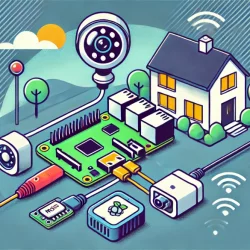What You Need to Know About Security Cameras
People choosing a network camera or other security camera for the first time sometimes have unrealistic expectations of what these devices can do. Though even mid-range cameras can deliver a range of user options and advanced security features, a camera can only perform to the extent it was designed to. To prevent buyer’s remorse and to keep from being taken advantage of by unscrupulous camera dealers, it is important to know what functions the primary cameras on the market can perform. Once you know about the features unique to each camera type you can choose which will work best within existing security alarm systems in your home or business.
Types of Security Cameras on the Market
These are some of the most popular camera types within the security market today. Each individual model will vary with regards to additional features so speak with a security agency associate or a knowledgeable salesperson to find out about the particular advantages of different cameras.
- Infrared cameras – These cameras detect fluctuations in heat and translate these variations to an electronic signal; this signal is then displayed for the user to examine. An IR camera can show you the presence of an intruder because their heat signature will be visible to the camera even in low light.
- Pan, tilt, and zoom cameras – These cameras are mounted in mobile boxes that can be moved around with the help of a wired joystick or wireless control panel. The controls are capable of directing three actions. Pan action moves the camera back and forth, the tilt action moves it up and down, and the zoom action lets the user magnify an image or move the camera’s line of sight further away.
- Dome cameras – A popular choice in retail environments, dome cameras have seen increasing use by homeowners. This camera is mounted inside a reverse dome on the ceiling. The camera’s eye is angled downward so that the user can get a clear view of every visitor’s face and head. Some dome cameras record continually while others are motion activated.
- Hidden cameras – Since these cameras are intended to blend in and be unnoticed, they do not frequently offer a lot of additional user options; additional options would increase the size of the camera and make it harder to hide. Today’s hidden cameras implement USB technology to make it easier to retrieve stored images and video.
Adding a Camera to Your Existing Security System
As you can see, most security cameras are designed to work as part of comprehensive security alarm systems. Your new camera can replace obsolete forms of monitoring or they can be used to augment existing surveillance. Additional cameras can be strategically placed to survey driveways, gates, and extended portions of property. Just make sure that new cameras are aimed to encompass new ground, not areas that are already adequately served by existing cameras.
Some cameras will need to be hardwired into your building’s power system in order to provide an uninterruptable supply of electricity. Others can be plugged into the wall. Make sure you know about the power requirements of your chosen camera so you can make any changes to your infrastructure that might be called for.
Customers who understand the advantages of various security camera types are better able to select the equipment that will meaningfully enhance their existing security measures. Strategic placement will help you get the most use out of your new surveillance cameras.
Article written by Jen Blair of the Sprightly Shopper, Follow her on twitter @sprightlyshopr
More to Read:
Previous Posts:




